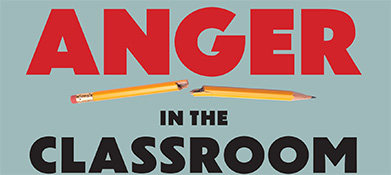Have you ever been accused of having an attitude?. When used this way we immediately think of someone being difficult, negative, or defiant. This slang term is quite wide-spread. I’ve even heard it referred to as “tude”. “You have quite a tude today, Mister” Yet a person with knowledge in aeronautics will have a different understanding of the term attitude.
In aeronautics attitude (not to be confused with altitude) refers to the orientation of an aircraft’s axis relative to a reference line (or geometric plane) such as the horizon. In astronautics it refers to the orientation of a spacecraft in relation to its direction of motion. It all has to do with the slant that the craft has at any particular moment. If it’s a desired slant for that situation, that’s great. If it’s not an intended slant there could be grave consequences.
The neutral position for an airplane is called “straight & level”. The tilt of the wings, one way or another, or the slant of the plane, is its attitude. I recall while first taking lessons flying glider airplanes attempting to turn the craft right of left. I could turn the plane on the right/left axis (shifting the nose to tail alignment) and produce nothing but a sheering motion – like flying sideways. I could give the wings an attitude change (lowering one wing tip) in the correct direction and again observe no proper turning of the craft. It was only when performing both of these actions simultaneously (combining desired attitude with proper action) that I could experience that satisfying movement of the craft as it banked to the right or left.
The attitude that we carry going into any situation is the slant that we hold. More often than not this is invisible to us and significantly affects any interaction we step into (The glider instructor would periodically turn to me and ask, “Where is the ribbon pointed, Glenn?” The 4” nose ribbon would be pointing off to one side meaning I was flying the plane in a slight sheering motion, at a sideways angle, and I wasn’t aware of it. I had thought I was sailing happily straight ahead. The plane would be on course when it was lined up with the ribbon).
We develop a mind-set over years of accumulated experiences, ideas, and beliefs. Some of this has been done intentionally through parents and schools and such. Much of it, though, is accidental. And the grip of these set-beliefs can tighten, as discussed above in the section “An Old Friend”. The longer we hold these thoughts and notions, the more entrenched they become and often the less we’re aware of them. Our attitudes become calcified – and often invisible to us. There are also many attitudes, even odious ones, that we are aware of and might even be proud of. “That’s me”. I become identified with these attitudes – and sometimes fiercely defensive.
Along with these overarching belief-sets a blanket of emotion is laid – emotion that has become associated with certain beliefs – such as anger at any student who questions a teacher, or an immediate bristling reaction to anyone who doesn’t support my own religious or political beliefs. Accompanying this is the emotional state that I might carry at any particular moment (I may be in a cranky mood this day). The blending of these emotional conditions that overlay my particular mind-sets form the attitude that I carry into each moment, each interaction, each action. To differing degrees this is what we all do. It’s not necessarily bad – just troublesome. It means that the picture I have is not a clear one.
All of the information coming to me that I use to understand the moment I am experiencing is filtered through a mental construct which will twist, color, and shape my perceptions. Compounding this problem, all of the thinking and processing of these impressions runs through the same set of chutes and ladders. Where is the ability to objectively process and evaluate my experience?
My actions become more predictable in some settings, more unpredictable at others, yet little of it through my own intent. It has become more accidental, haphazard. I have lost that fresh spark, that spontaneity that can make a classroom or an interaction interesting, surprising, and vital.
This lack of objectivity, of getting a true picture, can greatly affect the teacher-student relation. A teacher will not be able to clearly understand a student’s position or point of view, and many students will sense this. Communication is impaired. The ability to teach is compromised. A teacher may be traveling blind. Yet a teacher might be able to help awaken a student to his own preset attitudes, his own particular slant on things – if the teacher can see the slant in herself (and if the situation is appropriate – this is not to be forced on students).
Is there such a thing as right-attitude, as there is when we wish to turn an aircraft? Am I able to cultivate an attitude of openness, newness, or objectivity that can help students open to broader areas of experience or to develop new perspectives? It is there for us to explore. It is up to us to learn to combine desired attitude with proper action – to help the moment move in a useful direction.
I find that working with attitude is another area where I can learn about myself, through the practices of notebook-recording and self-observation (more on these to follow). With this comes the possibility of escaping globs of rigid attitude I carry, knowingly or not, into daily interactions. With this comes the possibility of a keenly objective perception. With this comes the possibility of flying straight & level. “Where is the ribbon pointed, Glenn?”
